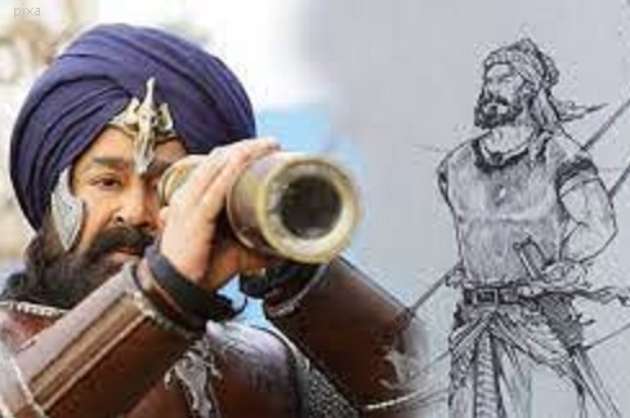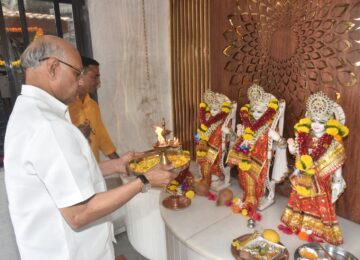Anupama Nair
www.mediaeyenews.com
I had previously written about how Portuguese, Dutch and French came to India with an intent to trade with us and loot our wealth. However, many brave hearts fought against these Europeans. Let me start with Kunjali Marakkar or ‘Lion of the Arabian Sea’.
People in those days thought there were only three continents – Asia, Europe and Africa. Before, 1553 there was trade done between Asia and Europe, and Silk Route existed via Constantinople. The Arabs took goods from the East and sold it to the Europeans. Dacca Muslin, Indian Spices and silk were used by the Royal families of Europe. However, the capture of Constantinople by Turks in 1453 destroyed the trade route. The result of this event was imperialism and most of America, Asia, New Zealand and Australia came under the rule of European countries. When the trade route was blocked, the European royal families, who were addicted to Dacca Muslin, spices and silk were forced to find an alternate trade route. Many sailors set on a long journey through the Atlantic to come to India then known as the “golden bird”.
In the past India was invaded many times by invaders from time immemorial through the Himalayan passes. Did you know the first invader who invaded India through the ocean was the Portuguese? Vasco Da Gama reached Calicut in 1499. During the early part of the sixteenth century, the Portuguese were successfully carrying out trade in coastal India. However, with time their imperialist motives became clear and slowly by slowly, they began their reign of terror. If you thought Mughals, Khiljis or the British were cruel, Portuguese will emerge the winners. Goa and Brazil were the main victims.
Who was Kunjali Marakkar? Kunjali Marakkar” was the title given to Zamorin’s naval admiral. The title was equivalent to that of “Nair”. Hence, the Marakkars had the powers and privileges of any Nair noble of Zamorin’s service. There were four Kunjali Marakkars — Kutti Ahmed Ali, Kutti Pokker Ali, Pattu Marakkar, and Mohammed Ali all led guerilla wars against the Portuguese and maintained forts in Zamorin’s territory. The ancestry of the Marakkars is topic for debate. Some claim that they descended from the Arabs, while others say, they hail from Egypt. It is believed that the family had settled in the kingdom of Cochin, but aided the Zamorin secretly in their war against the Portuguese as Kochi was an ally of the Portuguese. However, the Zamorin lost the war, and the Marakkars were forced to move to north Kerala.
Once the Portuguese started interfering in the trade it was hurting the merchants badly, so they joined hands and approached the Zamorin to fight the Portuguese. The king selected Kutti Ahmed Ali as admiral, bestowed him with the title of “Kunjali Marakkar”, and entrusted the protection of his land borders to him. The Portuguese had arrived on shores of India in 1498. Unable to compete with the Arab traders who had been in business with Calicut for quite some time, it is believed that the Portuguese resorted to piracy. Tensions peaked when the Portuguese started enforcing the use of ‘Portuguese passes’ for free travel and trade in the waters of the region. When the Marakkars, whose trade was affected by Portuguese piracy, immigrated to his kingdom, and the Zamorin used the opportunity to increase his naval power . The Marakkars employed guerilla tactics to defeat the Portuguese multiple times. Guerilla tactics are most often associated with jungle warfare, so what tactics were actually employed, we do not know. It is said that the Marakkars used war-paroes that are small crafts manned by 30-40 men. These war-paroes could be rowed through lagoons and narrow waters. They would be stationed at strategic points, from where they would stage ambushes on the Portuguese. The craft’s ability to navigate through narrow waters made it easy for the guerilla fighters to retreat strategically after an ambush.
Marakkar IV is said to have rescued a Chinese boy from slavery on a Portuguese ship. The boy was rechristened to Chinali and went on to be Marakkar IV’s trusted right hand. The Marakkars seem to have fought for their people and earned the love and respect of the people of the region. There is a temple dedicated to Kunjali Marakkar in Madhavan Kurichi village in the Thoothukudi district of Tamil Nadu. The village is situated in what used to be Portuguese territory in the 16th century, and the temple was probably constructed after the admiral rescued it from some danger. While the exact origins of the temple are unknown, Kunjali Marakkar is worshipped as a deity and is venerated through annual festivals and prominence in local Villu Pattu.
The question asked is where the Kunjali Marakkars pirates? The answer is a ‘no’. They were vassals of the Zamorin and were entrusted with fighting a war against the invaders. The Portuguese call him as a pirate but to us Indians, the Marakkars are local heroes who displayed exemplary leadership and strategic thinking. It is because of such great men that the Portuguese were pushed out of south India and had to be satisfied with Bombay and Goa. Subsequently, Bombay was given to the British.
Much of the trade carried on in the Western coast of India was taxed by the Portuguese who looked to advance upon Ullal, near Mangalore Port, (Karnataka). That is how they came to face the brave queen Abbakka Chowta their nemesis.
She was the first Tulluva queen of Ullal and belonged to the Chowta dynasty who ruled over parts of coastal Karnataka with the capital city Puttige. Ullal was their subsidiary capital and was the capital of the Chowta king Thirumala Raya III who was the vassal of the Vijayanagar kingdom. The Chowtas were Jain kings who had originally migrated to Tulu Nadu (a province consisting of present-day Dakshina Kannada district of Karnataka, portions of Udupi and Kasargod district in Kerala) from Gujarat in the 12th century.
As the Chowtas followed the matrilineal system, the king’s heir was his niece, Abbakka. She was a brave princess who had been trained in archery, cavalry, military strategy, and all other skills a young princess needed. When she became the queen of Ullal, she was aware of the threat posed by the Portuguese and was determined to resist it with all power she had. Before his death, Thirumala Raya III married Abbakka with Lakshmappa Bangaraja, the ruler of Mangalore. She was so independent that even after her marriage she stayed in Ullal along with her three children. The marriage broke down when Bangaraja negotiated with the enemy of her kingdom the Portuguese. They wanted to keep control over trade in the Indian Ocean by using sailing permits. “In true colonial style, what the Portuguese could not achieve through bullying, they did through strength”, was the view of the historians.
A friction with the Portuguese was inevitable and Ullal was strategically important as a port as it had a thriving spice trade. By this time, the Portuguese were alarmed about Rani Abbakka’s bravery inspiring other rulers. When threats failed, they resorted to treachery. A series of edicts were passed to make any alliance with the defiant queen illegal. Her ex-husband, Bangaraja of Mangalore, was also warned against sending any aid to Ullal.
Her first battle with the Portuguese was in 1555, when Admiral Dom Álvaro da Silveira and his army arrived with imperialistic designs in Ullal. In 1568, the Portuguese Viceroy Antony D’ Noronha sent Joao Peixoto with a fleet of soldiers. He however, managed to capture Ullal and enter the palace. Abbakka, managed to escape and took shelter in a mosque. She, along with 500 soldiers, killed Peixoto and seventy troops in the night. Historians said “the invaders were forced to flee to their ships in disgrace”.
This brave queen’s words: “Save the motherland. Fight them on land and the sea. Fight them on the streets and the beaches. Push them back to the waters”, reverberated through the airstreams as she and her soldiers fired against the Portuguese ships. Many of the ships in the Portuguese fleet were burnt that night, but unfortunately Rani Abbakka was wounded in the crossfire and was captured with the help of her own chieftains. The brave queen passed away in captivity, but her legacy will never die. After her death, her brave daughters continued the fight against the Portuguese. As a result, Portuguese rule was confined only in Goa, and were finally forced to leave in 1961.
It can be rightly said that Rani Abbakka was the main thorn in the Portuguese side throughout her reign despite their superior military power. Thanks to the ultra-left influenced curriculum she remains buried in the sands of time. However, she still lives on in the folk culture of the Dakshin Kannada region and in the recent years, her story gained popularity across the country. There is an annual celebration in her memory, called “Veera Rani Abbakka Utsava” held in Karnataka.




























